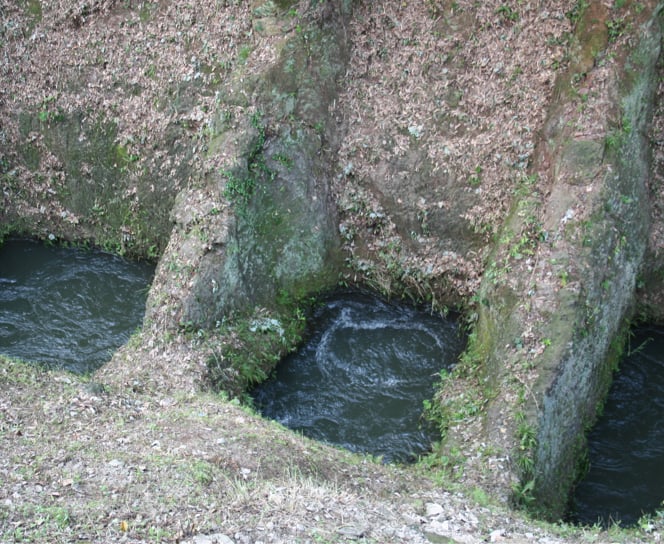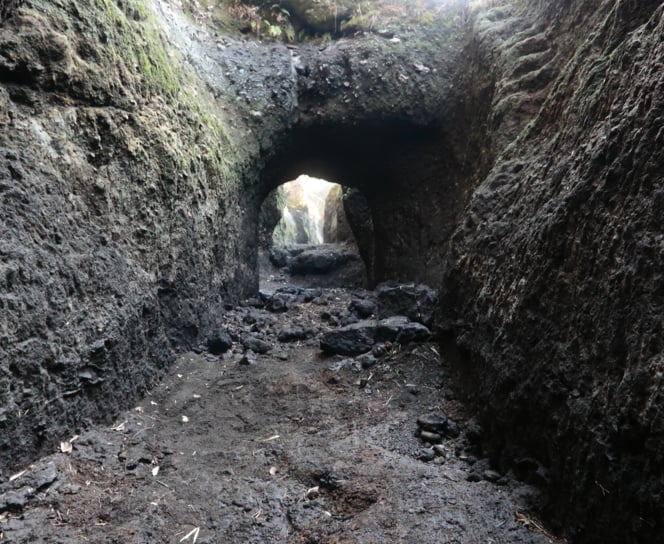Ingenious classical engineering!
Whirlpools keep ash from settling on the canal bottom!
In order to construct the Babakusu Ide, some areas needed to be dug up to 20 meters deep into the hard bedrock between the Magate and Karakawa areas of Kikuyo. The Shirakawa River runs down from the Aso volcano, bringing with it a lot
of ash and sediment that deposit along the bottom of the canal and hinder water flow, necessitating frequent dredging of the canal bottom.
Cleaning out sediment from the bottom of a canal dug 20 meters deep is no simple task. To prevent
accumulation of sediement, an ingenious idea was born to utilize the power of water to wash away ash and sediment. This idea is called the Hanaguri Mechanism.

“Hanaguri” means “nose-hollow,” and got its name because each section looks like the nose piercing on a cow!
The Hanaguri Mechanism involves leaving thin partitions of rock at regular intervals along the canal dig, and then carving out about 2-meter-tall holes at the bottoms of these partitions. It ends up looking like a series of very short
tunnels.
When water flows into these narrow tunnels, the speed of the water increases and hits the next wall with increased force, creating a whirlpool effect. This whirlpool picks up the sediment and ash that have settled at the
bottom and washes it down stream. The name “hanaguri,” meaning “nose-hollow” gets its name because the sections of walls with holes in them are reminiscent of the nose piercings that cows have.
